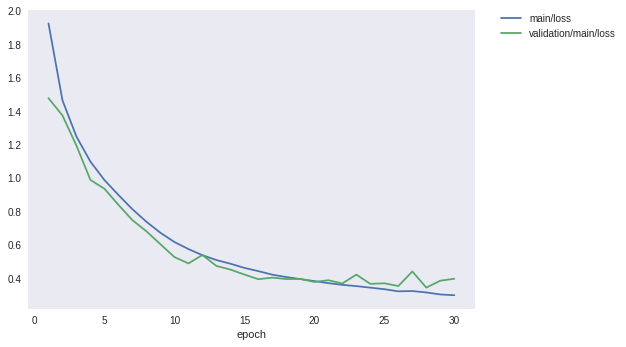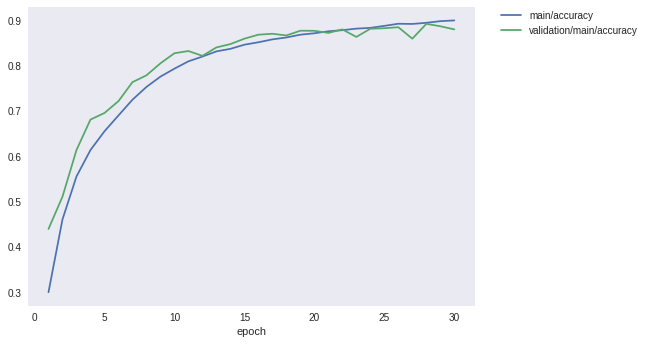How to write a custom dataset class¶
A typical strategy to improve generalization in deep neural networks is to increase the number of training examples which allows more parameters to be used in the model. Even if the number of parameters is kept unchanged, increasing the number of training examples often improves generalization performance.
Since it can be tedious and expensive to manually obtain and label additional training examples, a useful strategy is to consider methods for automatically increasing the size of a training set. Fortunately, for image datasets, there are several augmentation methods that have been found to work well in practice. They include:
- Randomly cropping several slightly smaller images from the original training image.
- Horizontally flipping the image.
- Randomly rotating the image.
- Applying various distortions and or noise to the images, etc.
In this example, we will write a custom dataset class that performs the first two of these augmentation methods on the CIFAR10 dataset. We will then train our previous deep CNN and check that the generalization performance on the test set has in fact improved.
We will create this dataset augmentation class as a subclass of DatasetMixin, which has the following API:
__len__method to return the size of data in dataset.get_examplemethod to return data or a tuple of data and label, which are passed byiargument variable.
Other necessary features for a dataset can be prepared by inheriting chainer.dataset.DasetMixin class.
[1]:
# Install Chainer and CuPy!
!curl https://colab.chainer.org/install | sh -
Reading package lists... Done
Building dependency tree
Reading state information... Done
libcusparse8.0 is already the newest version (8.0.61-1).
libnvrtc8.0 is already the newest version (8.0.61-1).
libnvtoolsext1 is already the newest version (8.0.61-1).
0 upgraded, 0 newly installed, 0 to remove and 1 not upgraded.
Requirement already satisfied: cupy-cuda80==4.0.0b3 from https://github.com/kmaehashi/chainer-colab/releases/download/2018-02-06/cupy_cuda80-4.0.0b3-cp36-cp36m-linux_x86_64.whl in /usr/local/lib/python3.6/dist-packages
Requirement already satisfied: six>=1.9.0 in /usr/local/lib/python3.6/dist-packages (from cupy-cuda80==4.0.0b3)
Requirement already satisfied: fastrlock>=0.3 in /usr/local/lib/python3.6/dist-packages (from cupy-cuda80==4.0.0b3)
Requirement already satisfied: numpy>=1.9.0 in /usr/local/lib/python3.6/dist-packages (from cupy-cuda80==4.0.0b3)
Requirement already satisfied: chainer==4.0.0b3 in /usr/local/lib/python3.6/dist-packages
Requirement already satisfied: protobuf>=3.0.0 in /usr/local/lib/python3.6/dist-packages (from chainer==4.0.0b3)
Requirement already satisfied: filelock in /usr/local/lib/python3.6/dist-packages (from chainer==4.0.0b3)
Requirement already satisfied: six>=1.9.0 in /usr/local/lib/python3.6/dist-packages (from chainer==4.0.0b3)
Requirement already satisfied: numpy>=1.9.0 in /usr/local/lib/python3.6/dist-packages (from chainer==4.0.0b3)
Requirement already satisfied: setuptools in /usr/lib/python3/dist-packages (from protobuf>=3.0.0->chainer==4.0.0b3)
1. Write the dataset augmentation class for CIFAR10¶
[2]:
import numpy as np
from chainer import dataset
from chainer.datasets import cifar
gpu_id = 0 # Set to -1 if you don't have a GPU
class CIFAR10Augmented(dataset.DatasetMixin):
def __init__(self, train=True):
train_data, test_data = cifar.get_cifar10()
if train:
self.data = train_data
else:
self.data = test_data
self.train = train
self.random_crop = 4
def __len__(self):
return len(self.data)
def get_example(self, i):
x, t = self.data[i]
if self.train:
x = x.transpose(1, 2, 0)
h, w, _ = x.shape
x_offset = np.random.randint(self.random_crop)
y_offset = np.random.randint(self.random_crop)
x = x[y_offset:y_offset + h - self.random_crop,
x_offset:x_offset + w - self.random_crop]
if np.random.rand() > 0.5:
x = np.fliplr(x)
x = x.transpose(2, 0, 1)
return x, t
/usr/local/lib/python3.6/dist-packages/cupy/core/fusion.py:659: FutureWarning: cupy.core.fusion is experimental. The interface can change in the future.
util.experimental('cupy.core.fusion')
This class performs the following types of data augmentation on the CIFAR10 example images:
- Randomly crop a 28X28 area form the 32X32 whole image data.
- Randomly perform a horizontal flip with 0.5 probability.
2. Train on the CIFAR10 dataset using our dataset augmentation class¶
Let’s now train the same deep CNN from the previous example. The only difference is that we will now use our dataset augmentation class. Since we reuse the same model with the same number of parameters, we can observe how much the augmentation improves the test set generalization performance.
[3]:
import chainer
import chainer.functions as F
import chainer.links as L
from chainer.datasets import cifar
from chainer import iterators
from chainer import optimizers
from chainer import training
from chainer.training import extensions
class ConvBlock(chainer.Chain):
def __init__(self, n_ch, pool_drop=False):
w = chainer.initializers.HeNormal()
super(ConvBlock, self).__init__()
with self.init_scope():
self.conv = L.Convolution2D(None, n_ch, 3, 1, 1,
nobias=True, initialW=w)
self.bn = L.BatchNormalization(n_ch)
self.pool_drop = pool_drop
def __call__(self, x):
h = F.relu(self.bn(self.conv(x)))
if self.pool_drop:
h = F.max_pooling_2d(h, 2, 2)
h = F.dropout(h, ratio=0.25)
return h
class LinearBlock(chainer.Chain):
def __init__(self):
w = chainer.initializers.HeNormal()
super(LinearBlock, self).__init__()
with self.init_scope():
self.fc = L.Linear(None, 1024, initialW=w)
def __call__(self, x):
return F.dropout(F.relu(self.fc(x)), ratio=0.5)
class DeepCNN(chainer.ChainList):
def __init__(self, n_output):
super(DeepCNN, self).__init__(
ConvBlock(64),
ConvBlock(64, True),
ConvBlock(128),
ConvBlock(128, True),
ConvBlock(256),
ConvBlock(256, True),
LinearBlock(),
LinearBlock(),
L.Linear(None, n_output)
)
def __call__(self, x):
for f in self.children():
x = f(x)
return x
def train(model_object, batchsize=64, gpu_id=gpu_id, max_epoch=20):
# 1. Dataset
train, test = CIFAR10Augmented(), CIFAR10Augmented(False)
# 2. Iterator
train_iter = iterators.SerialIterator(train, batchsize)
test_iter = iterators.SerialIterator(test, batchsize, False, False)
# 3. Model
model = L.Classifier(model_object)
if gpu_id >= 0:
model.to_gpu(gpu_id)
# 4. Optimizer
optimizer = optimizers.Adam()
optimizer.setup(model)
# 5. Updater
updater = training.StandardUpdater(train_iter, optimizer, device=gpu_id)
# 6. Trainer
trainer = training.Trainer(updater, (max_epoch, 'epoch'), out='{}_cifar10augmented_result'.format(model_object.__class__.__name__))
# 7. Evaluator
class TestModeEvaluator(extensions.Evaluator):
def evaluate(self):
model = self.get_target('main')
ret = super(TestModeEvaluator, self).evaluate()
return ret
trainer.extend(extensions.LogReport())
trainer.extend(TestModeEvaluator(test_iter, model, device=gpu_id))
trainer.extend(extensions.PrintReport(['epoch', 'main/loss', 'main/accuracy', 'validation/main/loss', 'validation/main/accuracy', 'elapsed_time']))
trainer.extend(extensions.PlotReport(['main/loss', 'validation/main/loss'], x_key='epoch', file_name='loss.png'))
trainer.extend(extensions.PlotReport(['main/accuracy', 'validation/main/accuracy'], x_key='epoch', file_name='accuracy.png'))
trainer.run()
del trainer
return model
model = train(DeepCNN(10), gpu_id=gpu_id, max_epoch=30)
epoch main/loss main/accuracy validation/main/loss validation/main/accuracy elapsed_time
1 1.92407 0.299832 1.47721 0.43959 85.7994
2 1.46391 0.460767 1.37372 0.510947 170.782
3 1.24698 0.555558 1.19284 0.613953 255.058
4 1.09747 0.613997 0.987924 0.68133 339.642
5 0.987182 0.655391 0.935555 0.69586 424.341
6 0.898338 0.690401 0.839072 0.722034 509.142
7 0.81304 0.725192 0.747639 0.764033 593.771
8 0.738109 0.753441 0.681274 0.77906 678.347
9 0.672411 0.776235 0.60375 0.805633 762.626
10 0.617099 0.793834 0.527143 0.827926 846.95
11 0.575074 0.810059 0.489332 0.832803 931.496
12 0.538337 0.820563 0.539499 0.822154 1016.05
13 0.509321 0.832021 0.474118 0.840764 1101.08
14 0.487421 0.837628 0.452331 0.848129 1185.79
15 0.462403 0.846771 0.422598 0.860072 1270.2
16 0.442934 0.852153 0.394928 0.868929 1354.51
17 0.421746 0.858516 0.404235 0.87092 1438.79
18 0.407674 0.862756 0.395771 0.867237 1523.3
19 0.39542 0.868938 0.396354 0.877687 1607.85
20 0.383477 0.871999 0.37822 0.877488 1692.17
21 0.371322 0.876399 0.388828 0.87281 1777.04
22 0.36101 0.878861 0.369287 0.880573 1861.17
23 0.353587 0.882282 0.422225 0.863953 1936.13
24 0.344247 0.883963 0.366904 0.882066 1977.98
25 0.335103 0.888387 0.370403 0.883161 2019.74
26 0.322226 0.893086 0.353938 0.88545 2061.59
27 0.323977 0.892626 0.44101 0.860072 2103.4
28 0.315712 0.895146 0.344539 0.892815 2145.16
29 0.303662 0.898777 0.385994 0.88754 2187.08
30 0.29911 0.900448 0.397462 0.880573 2228.82
In the case without the previous data augmentation, it was found that the precision which was capped at about 87% can be improved to 89% or more by applying augmentation to the learning data. It is an improvement of over 2%.
Finally, let’s take a look at the loss and precision graph.
[4]:
from IPython.display import Image
Image(filename='DeepCNN_cifar10augmented_result/loss.png')
[4]:

[5]:
Image(filename='DeepCNN_cifar10augmented_result/accuracy.png')
[5]:
